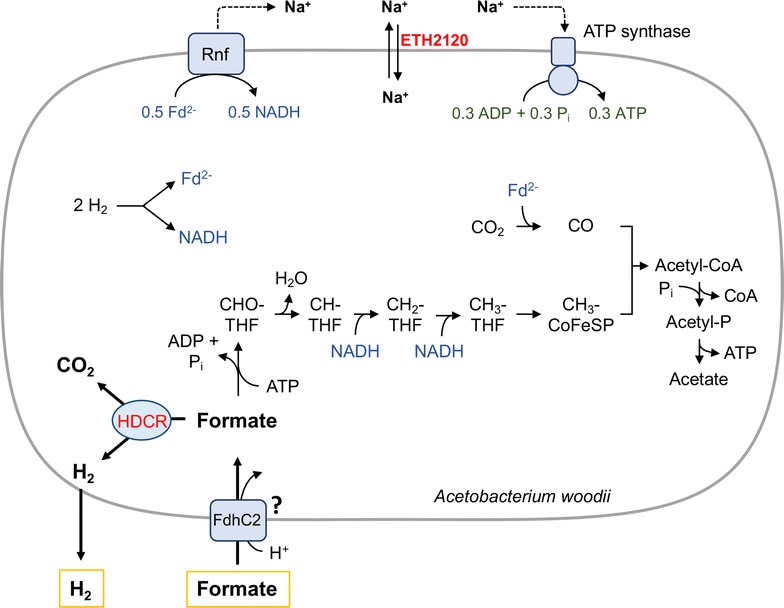Fig. 7.

Model of formate-dependent H2 production with A. woodii. Formate can be used by A. woodii as carbon and energy source. Formate could be taken up by the putative formate transporter FdhC2. It is then bound to the cofactor tetrahydrofolate (THF) and reduced to a cofactor-bound methyl group. To generate the required reducing equivalents, part of the formate is oxidized to H2 + CO2 catalyzed by the HDCR. H2 is further oxidized by an electron bifurcating hydrogenase and CO2 is reduced to carbon monoxide (CO) which is fused to the methyl group resulting in the formation of acetyl-CoA and subsequently acetate. The Rnf complex generates a sodium ion gradient driven by the electron transfer from reduced ferredoxin to NAD+ that is then used by a sodium ion-dependent ATP synthase to generate ATP. The sodium ionophore ETH2120 collapses the membrane potential which inhibits ATP formation and could lead to ATP hydrolysis by the now uncoupled ATP synthase. This in turn inhibits conversion of formate to acetate because the first reaction is ATP dependent, resulting in sole conversion into H2 + CO2. CHO-THF, formyl-THF; CH-THF, methenyl-THF; CH2-THF, methylene-THF; CH3-THF, methyl-THF; CoFeSP, Corrinoid iron-sulfur protein; Fd, ferredoxin
